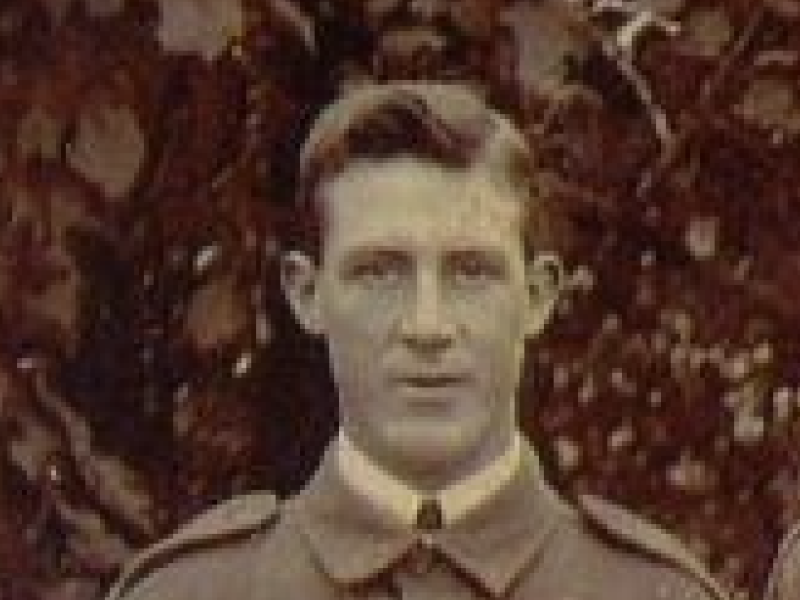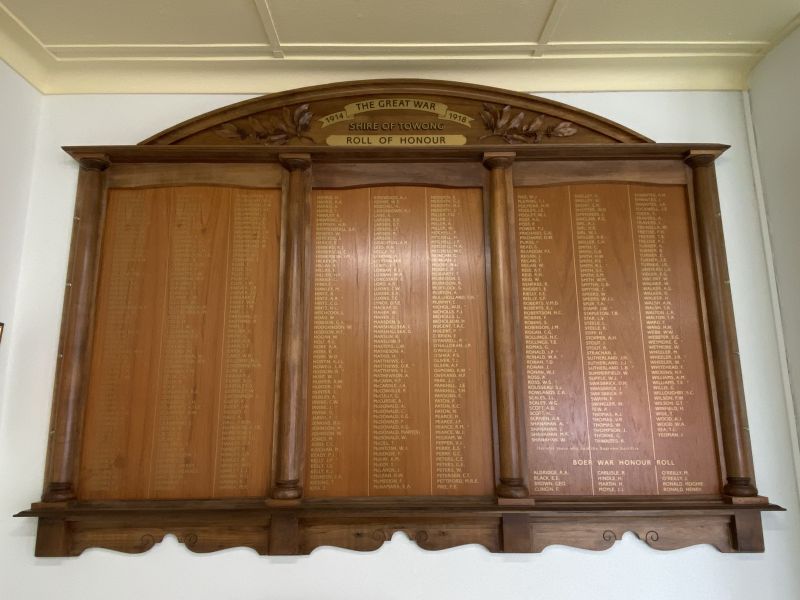George Richard Boon
George Boon was born in 1894 at Eskdale, Victoria. He was one of thirteen children to Joseph Richard and Jane Frances (née Ferguson) Boon. Only one sibling, Jessie, would die at an early age, when George was only seven and Jessie two.
Before George’s birth, his family had spent time in the Gundagai and Forbes region of New South Wales before moving to the Mitta Mitta area around 1882.
George enlisted on the 28th of January 1916 at Tallangatta, Victoria. At the time he was a single, twenty-one year old labourer living with his parents. In the photograph he is on the left hand side. George was allocated the Regimental Number 231 and assigned to A Company of the 37th Battalion. The 37th was in the process of being formed at Seymour, Victoria, and was part of the 10th Brigade of the 3rd Australian Division.
The battalion embarked on HMAT A34 Persic at the Port of Melbourne on the 3rd of June 1916. The first port of call was at Albany in Western Australia and although the ship stayed anchored in King George Sound, no leave was granted. Sailing in a westerly direction, the Persic arrived at Cape Town in South Africa on the 28th of June, departing two days later. After a brief stop at St Vincent Persic arrived at Plymouth, England on the 25th of July 1916. After disembarking late in the afternoon, the battalion entrained and arrived at Lark Hill Camp, Wiltshire, at 0215 hours on the following day.
The following four months saw George and the rest of the 37th Battalion involved in training, developing skills and techniques they would need in the trenches on the Western Front. They left England from Southampton and arrived at Havre, France the following day. It took the battalion nearly seventeen hours to travel by train from Havre on the coast to Baileul, a distance of just over 200 kilometres as the crow flies. The battalion finally arrived at Armentieres on the 28th of November. The following day half of the battalion took up duties in the trenches.
December saw the battalion moving between front line duty and rest at billets behind the front. Such duty was by no means quiet and restful. On the 9th the 39th Battalion took over responsibility for the line whilst the 37th went into close support in billets in Houplines. George’s company, A, along with B Company quartered in a brewery building near the Lys River. However, C and D Companies, which were billeted in a nearby factory, had to quickly abandon their billets as a German bombardment destroyed them, resulting in two dead and ten wounded. Some scouting and trench raids were also undertaken, one on Christmas Day resulting in six casualties.
The battalion’s War Diary only entry for the 2nd of January is “8a.m. 39th Specialist Come in.” However, the Official History of the battalion states that “On the afternoon of 2nd January, the enemy strafed the battalion front, causing about thirty casualties.” One of those killed from the strafing by enemy aircraft was Private George Richard Boon.
George was buried in the Cité Binjean Military Cemetery at Armentieres, France. He is remembered on the Australian War Memorial Roll of Honour and the Towong Shire Boer War and WW1 Roll of Honour at Tallangatta, Victoria. For his service, he was awarded the British War Medal and the Victory Medal.At the site of the Little Snowy Creek State School (3027), the Boon family planted a tree in remembrance of George. A few years later they replaced the original plate attached to the tree with a brass plaque.

 Stephen Learmonth
Stephen Learmonth